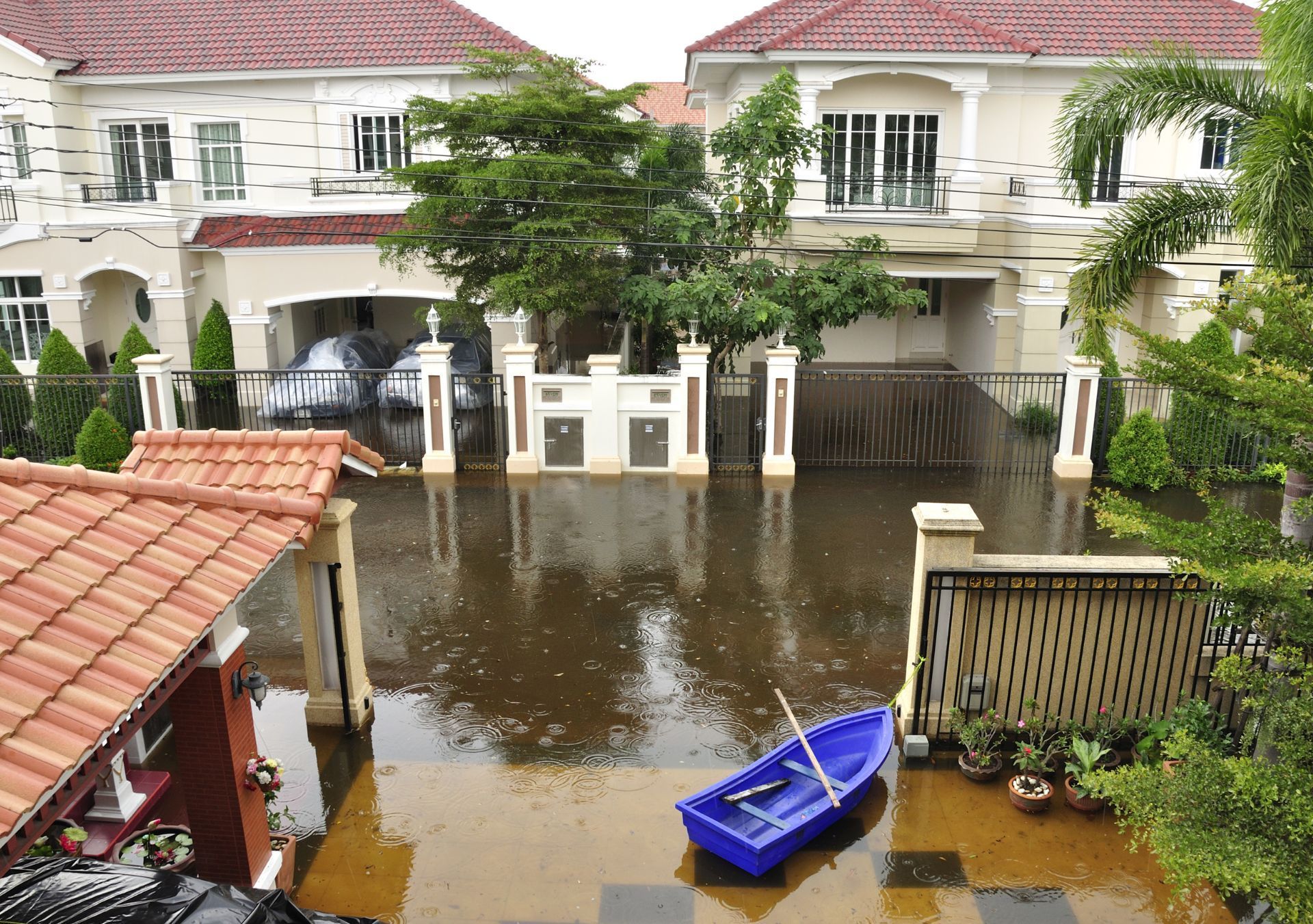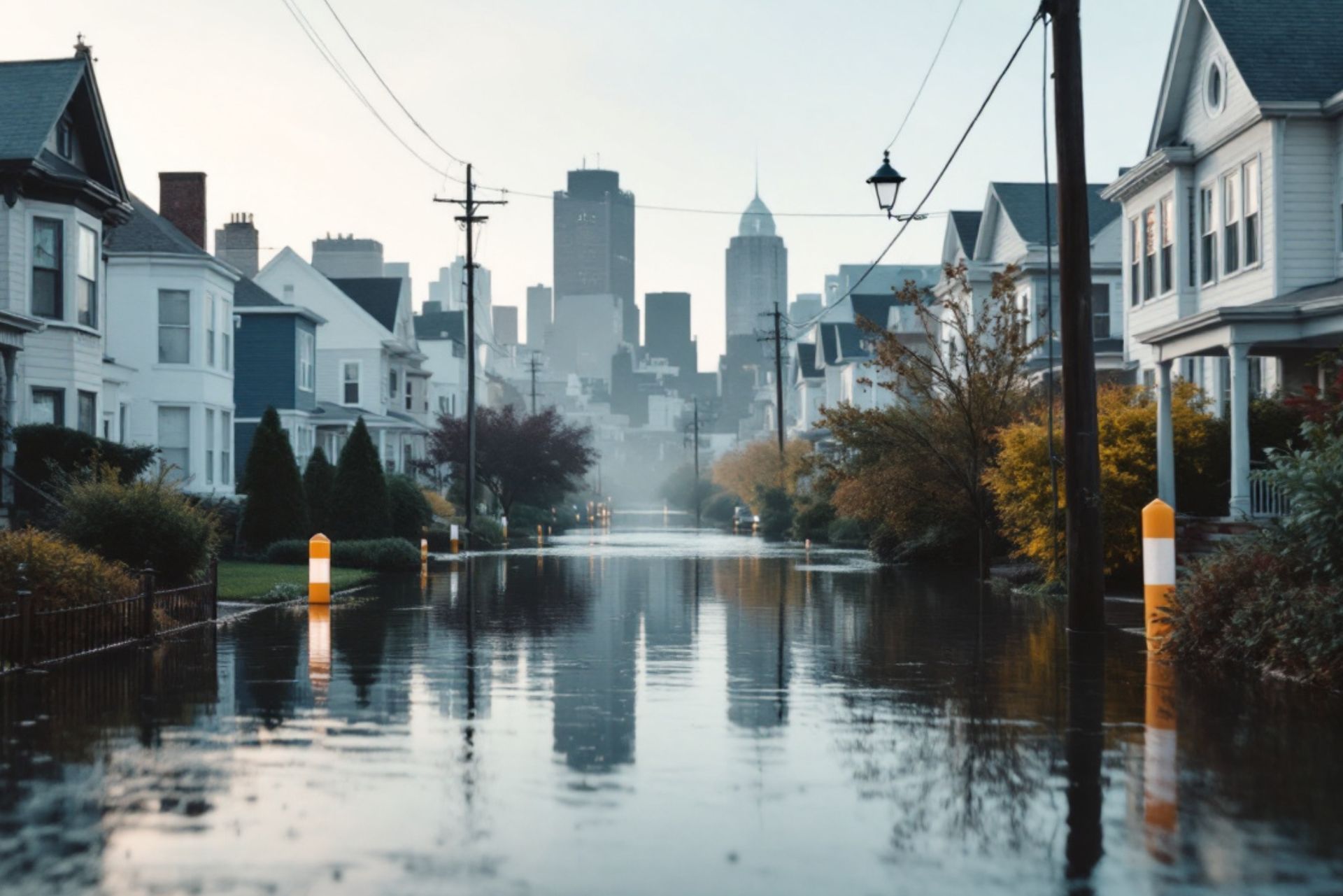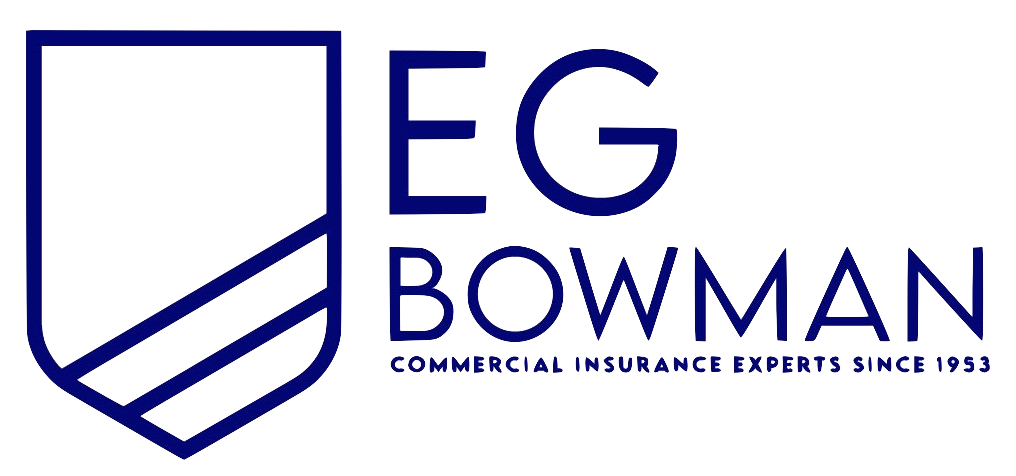
Most Common Personal Policies
Index
Contact Us
Flood insurance is a crucial aspect of financial planning for homeowners, especially in areas like New York that are prone to flooding. Understanding how flood insurance works, the specific policies available, and the risks involved is essential for anyone looking to protect their property. This article provides a comprehensive overview of flood insurance in New York, including its importance, the workings of different insurance types, and strategies for preparation and recovery.
Understanding Flood Insurance
Flood insurance is a specific type of property insurance designed to cover losses incurred due to flooding. This form of coverage is particularly vital in regions susceptible to heavy rainfall, storm surges, and rising water levels. Unlike standard homeowner's insurance policies, which often do not cover flood damage, flood insurance provides dedicated financial protection for such events. It is crucial for homeowners to recognize that flood risks can exist even in areas that are not traditionally considered flood zones, as weather patterns can shift and change over time, leading to unexpected flooding.
What is Flood Insurance?
Flood insurance typically comes in two forms: building coverage and contents coverage. Building coverage insures the structure of your home and its foundation, while contents coverage protects belongings inside the home, such as furniture, electronics, and personal items. It is important to note that certain items, like vehicles, are not covered by flood insurance. Homeowners should also be aware that there are limits to the amount of coverage available, and it may be necessary to purchase additional policies or endorsements to fully protect high-value items or unique structures on the property.
Why is Flood Insurance Important?
Floods can cause severe damage to homes and properties, resulting in costly repairs and significant financial loss. Having flood insurance can mitigate these risks, allowing homeowners to recover more quickly from such disasters. Additionally, federal regulations require flood insurance for properties located in high-risk flood zones if they are backed by a mortgage. Therefore, understanding your need for flood insurance is essential for financial security. Furthermore, even if you live in a low-risk area, it’s wise to consider flood insurance, as nearly 20% of flood claims come from properties outside of high-risk zones. This statistic underscores the unpredictable nature of flooding and the importance of being prepared for any eventuality.
Moreover, flood insurance policies are often provided through the National Flood Insurance Program (NFIP), which is managed by FEMA. This program not only offers affordable coverage options but also encourages communities to adopt floodplain management practices that reduce future flood risks. Homeowners should take the time to familiarize themselves with the specific terms and conditions of their flood insurance policy, including waiting periods for coverage to take effect and the claims process in the event of a flood. Being proactive and informed can make a significant difference in the aftermath of a flooding event, ensuring that homeowners are equipped to navigate the challenges that arise.

The Specifics of New York Flood Insurance
In New York, the specifics of flood insurance can vary based on various factors, including location, type of coverage, and local regulations. The state faces unique challenges due to its diverse geography, which includes coastal areas, rivers, and urban settings. Understanding how flood insurance works in New York can help homeowners choose the right policy for their specific situations. Additionally, the historical context of flooding in New York, particularly events like Hurricane Sandy in 2012, has heightened awareness and urgency around flood preparedness and insurance. This has led to increased advocacy for better flood management systems and more comprehensive insurance options.
How Does Flood Insurance Work in New York?
Flood insurance in New York operates primarily through the National Flood Insurance Program (NFIP), which was established by the federal government to provide affordable flood insurance to property owners. Policies are issued and regulated at the federal level, and local communities must participate in the NFIP to enable their residents to obtain subsidized flood insurance rates. Furthermore, the NFIP offers two types of coverage: building coverage, which protects the structure itself, and contents coverage, which protects personal belongings within the home. Homeowners should carefully evaluate their needs and consider purchasing both types of coverage to ensure comprehensive protection against potential flood damage.
The Cost of Flood Insurance in New York
The cost of flood insurance in New York can vary widely based on several factors, including the home's location, elevation, type of coverage, and the flood zone in which the property is situated. Typically, homes in high-risk flood zones will pay higher premiums compared to those in lower-risk areas. It is advisable for homeowners to obtain multiple quotes and understand their options in order to find the most suitable and affordable coverage. Additionally, factors such as the age of the home, the materials used in construction, and even the presence of flood mitigation measures like levees or flood vents can influence insurance rates. Homeowners may also want to explore potential discounts for implementing flood-resistant measures, which can help lower their premiums while enhancing the safety of their property.
The National Flood Insurance Program (NFIP)
The NFIP plays a crucial role in providing flood insurance to residents across the United States, including those living in New York. This program was developed to reduce the financial impact of flooding and promote floodplain management practices. Homeowners in participating communities are eligible for subsidized flood insurance rates, making it more affordable. The NFIP not only aids homeowners but also supports local governments in their efforts to mitigate flood risks through better planning and infrastructure development. By incentivizing communities to adopt floodplain management strategies, the NFIP fosters a culture of preparedness and resilience against natural disasters.
New York and the NFIP
New York has numerous municipalities that participate in the NFIP, which allows residents to access flood insurance coverage and benefit from the program's resources. Communities are encouraged to adopt and implement floodplain management practices to reduce flood risks and lower insurance costs. This collaboration between federal and state entities ensures that policyholders are better protected against flooding. Additionally, New York's diverse geography, ranging from coastal areas to river valleys, presents unique challenges and opportunities for flood management. As such, local governments are often engaged in ongoing training and development programs to enhance their understanding of flood risks and improve their response strategies.
How to Apply for NFIP in New York
Applying for NFIP coverage in New York is a straightforward process that can be done through authorized
insurance agents in the state. Homeowners will need to provide information regarding their properties, including its location, construction details, and any existing insurance policies. After gathering the necessary information, the agent will help determine the appropriate coverage levels and premiums. It is also advisable for applicants to review flood zone maps and understand their property's risk level, as this can significantly influence insurance rates. Furthermore, many agents offer additional resources and guidance on how to prepare for potential flooding, including creating an emergency plan and securing important documents, which can be invaluable in the event of a disaster.
Private Flood Insurance in New York
In addition to the NFIP, there are also private flood insurance options available for residents in New York. These policies can offer more flexibility in terms of coverage limits, exclusions, and pricing. Some homeowners may find that private insurers can provide better coverage at competitive rates compared to the NFIP.
Benefits of Private Flood Insurance
Private flood insurance often comes with several advantages that can be attractive for homeowners. These benefits can include:
- Higher coverage limits than offered by the NFIP.
- More customizable policy options.
- Faster claims processing and payment timelines.
- Coverage for additional perils that may not be included in NFIP policies.
Individuals considering private insurance should carefully evaluate their options and compare coverage plans to ensure they select the best fit for their needs. Additionally, private insurers may offer unique endorsements or riders that can enhance a homeowner's policy, such as coverage for basement contents or additional living expenses in the event of a flood. This level of customization can be especially beneficial for those living in areas prone to flooding, as it allows for a tailored approach to risk management.
Finding a Private Flood Insurance Provider
To find a private flood insurance provider in New York, homeowners can start with general research online or consult with insurance brokers who specialize in this area. Various insurance companies offer private flood insurance products, so it’s beneficial to gather quotes from multiple providers and assess the coverage details thoroughly. Furthermore, homeowners should consider checking the financial stability and customer service ratings of potential insurers through resources like A.M. Best or the Better Business Bureau. This due diligence can help ensure that the chosen provider is reliable and responsive, particularly when it comes time to file a claim.
Moreover, many private insurers are increasingly utilizing technology to streamline the application and claims processes. Some companies offer online portals where policyholders can manage their accounts, submit claims, and track the status of their requests in real-time. This tech-forward approach not only enhances customer experience but also provides peace of mind, knowing that assistance is just a click away. As the landscape of flood insurance continues to evolve, staying informed about the latest offerings and innovations in the market can empower homeowners to make the best decisions for their financial security.
Assessing Your Flood Risk in New York
Understanding your flood risk is a critical step in determining the type of insurance coverage you need. In New York, flood risks can vary significantly depending on geographic factors, climate conditions, and infrastructure.
New York Flood Zones Explained
Flood zones in New York are designated areas that illustrate the likelihood of flooding. The Federal Emergency Management Agency (FEMA) maps these zones, classifying them into different categories such as high-risk, moderate-risk, and low-risk zones. The mapping of these areas is essential for homeowners to understand their potential flood risk and the necessity for insurance coverage. High-risk zones, often referred to as Special Flood Hazard Areas (SFHAs), are regions where the chance of flooding is significantly elevated, particularly during severe weather events. In contrast, moderate-risk zones may experience flooding less frequently, but homeowners in these areas should still consider flood insurance as a precautionary measure.
Tools for Assessing Your Property's Flood Risk
Homeowners can utilize various tools to assess their property’s flood risk. FEMA provides online tools such as the Flood Map Service Center, where individuals can search for flood zone information directly related to their property. Additionally, local government resources and planning departments can offer insights into historical flood data and trends within communities. Beyond these resources, homeowners may also benefit from consulting with insurance agents who specialize in flood insurance. These professionals can provide personalized assessments based on the unique characteristics of a property, including its elevation, proximity to water bodies, and local drainage systems. Furthermore, technology has advanced to include mobile applications that can alert homeowners to weather changes, potential flood warnings, and even real-time flood conditions, making it easier to stay informed and prepared.

Preparing for a Flood in New York
Preparation is key when it comes to mitigating the impact of floods. Developing a comprehensive flood preparedness plan can significantly improve outcomes in the event of a disaster. In New York, where heavy rains and storm surges can lead to rapid flooding, being proactive is essential. Local authorities often provide resources and guidelines tailored to specific neighborhoods, which can be invaluable in crafting a personalized flood response strategy.
Flood Safety Tips
To stay safe during a flood, consider the following tips:
- Keep emergency supplies on hand, including water, non-perishable food, medications, and first-aid kits.
- Stay informed about local weather conditions and flood alerts through trusted sources.
- Have an evacuation plan in place, including designated meeting locations and transportation plans.
By following these guidelines, homeowners can better protect themselves and their loved ones during a flood event. Additionally, it’s wise to familiarize yourself with local evacuation routes and shelters, as these can change based on the severity of the flooding. Engaging with community preparedness programs can also provide insights into how neighbors can support each other during emergencies, fostering a sense of solidarity and cooperation.
Post-Flood Recovery and Insurance Claims
After a flood, assessing damages and initiating the recovery process is crucial. Homeowners should immediately contact their insurance providers to file claims and start documenting losses through photographs and inventory lists. Understanding the claims process can help expedite recovery efforts and ensure that homeowners receive the financial support necessary to restore their properties. It’s also beneficial to keep receipts for any temporary repairs or accommodations, as these can be included in your claim to demonstrate the extent of your losses.
Moreover, reaching out to local disaster recovery organizations can provide additional assistance and resources. Many non-profits offer services ranging from cleanup support to financial aid for those affected by flooding. Community workshops on flood recovery can also equip homeowners with knowledge about rebuilding sustainably, ensuring that future renovations are more resilient to potential flooding. Engaging with these resources not only aids in recovery but also strengthens community ties in the face of adversity.
Frequently Asked Questions about New York Flood Insurance
Many homeowners have common questions about flood insurance in New York. Clarifying these queries can aid in understanding the complexities of flood coverage.
Can I Get Flood Insurance If I Don't Live in a Flood Zone?
Yes, homeowners outside of designated flood zones can still purchase flood insurance. In fact, approximately 20% of flood insurance claims come from properties located outside high-risk areas. Therefore, individuals in lower risk zones may wish to consider obtaining flood insurance as a precautionary measure against unexpected flooding events.
Does Homeowner's Insurance Cover Flooding?
Generally, traditional homeowner's insurance policies do not cover flood damage. Homeowners should review their policies to confirm this and pursue separate flood insurance if they live in an area with potential flood risks. Understanding the limitations of homeowner's insurance will ensure that homeowners are adequately protected against various types of natural disasters.
In conclusion, flood insurance remains an essential component of homeownership in New York, especially in areas at risk for flooding. By understanding the different insurance options available and taking proactive measures, homeowners can effectively safeguard their properties and secure their financial well-being against the unpredictable nature of floods.
